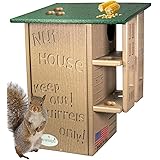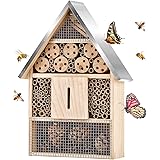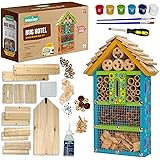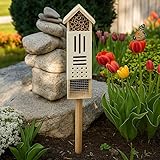Seeing a few polka-dotted ladybugs in the garden is always a good thing, but there’s a new imposter on the scene: the Asian Lady Beetle (Coccinella septempunctata). While they may look a lot like our beloved native critters, these imported pests are nothing to mess with. In fact, they’re more of a nuisance than their harmless cousins and can invade our homes en masse during fall and spring.
The invasive beetles are drawn to warm, bright places that provide a place to overwinter, such as the cracks in your house or the crevice of a window. Once they find a cozy spot, they’ll release a potent pheromone that attracts more of the critters to that area and soon that window or baseboard can be crawling with them. The bugs can also produce a liquid that causes an allergic reaction in some people.
It can be tricky to tell the difference between these beetles and their native counterparts, especially since Asian Lady Beetles can appear in a variety of colors ranging from red to orange and even tan. But there are a few things to keep in mind to help you identify the impostors: Look at the spot where the head meets the wings: If it has a small white “M” marking, you’re dealing with an Asian Lady Beetle, not a native Ladybug. Asian beetles also have a black W or M-shaped mark on their heads, whereas native Ladybugs lack this feature.
Another telltale sign is their size; Asian Lady Beetles are larger than ladybugs. You can also check the color of their shells. Ladybugs are usually bright red, but the shells of Asian beetles can be a light to dark orange or even tan.
Once you know what to look out for, there are a few ways to prevent a ladybug invasion from occurring in your home. It’s best to do this preventatively before the fall and spring seasons, which is when these pests tend to show up in large numbers seeking warmth as they search for places to overwinter.
These invasive beetles aren’t exactly welcome guests inside your house, but they can be controlled with the same methods that would control other common household pests, such as spider mites or fleas. The simplest way is to spray insecticide outdoors where you suspect a problem. These products will kill the beetles without harming plants or animals, and are less likely to make their way into your home.
Another method is to simply vacuum the beetles as they enter your home and dump them in the trash. If you don’t want to vacuum them, just be sure not to crush them as this can cause the yellow chemicals inside their bodies to spill out, which can trigger an allergic reaction in some people. Finally, you can also use a mixture of equal parts baking soda and water to create a homemade repellent. This mixture should be mixed in a bottle or other container that can easily be opened and closed.









